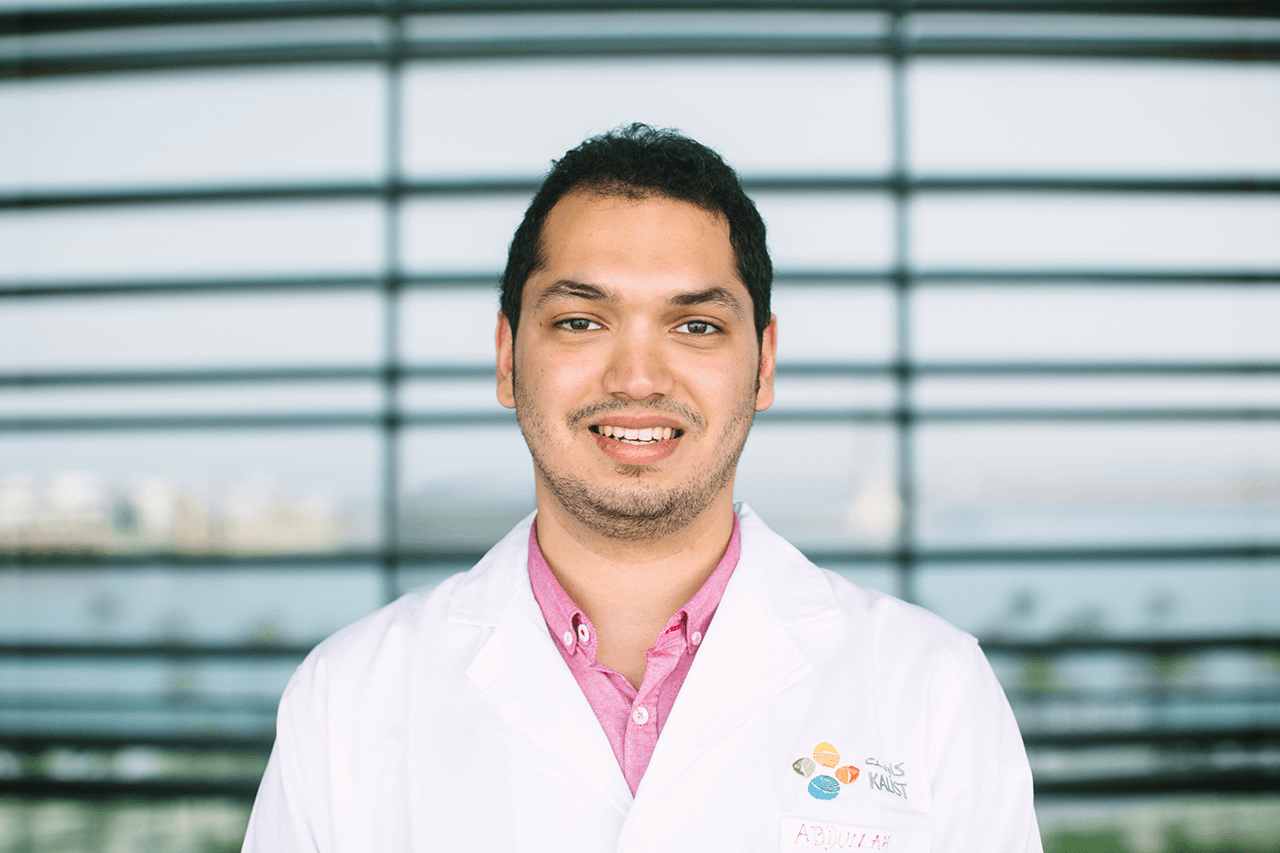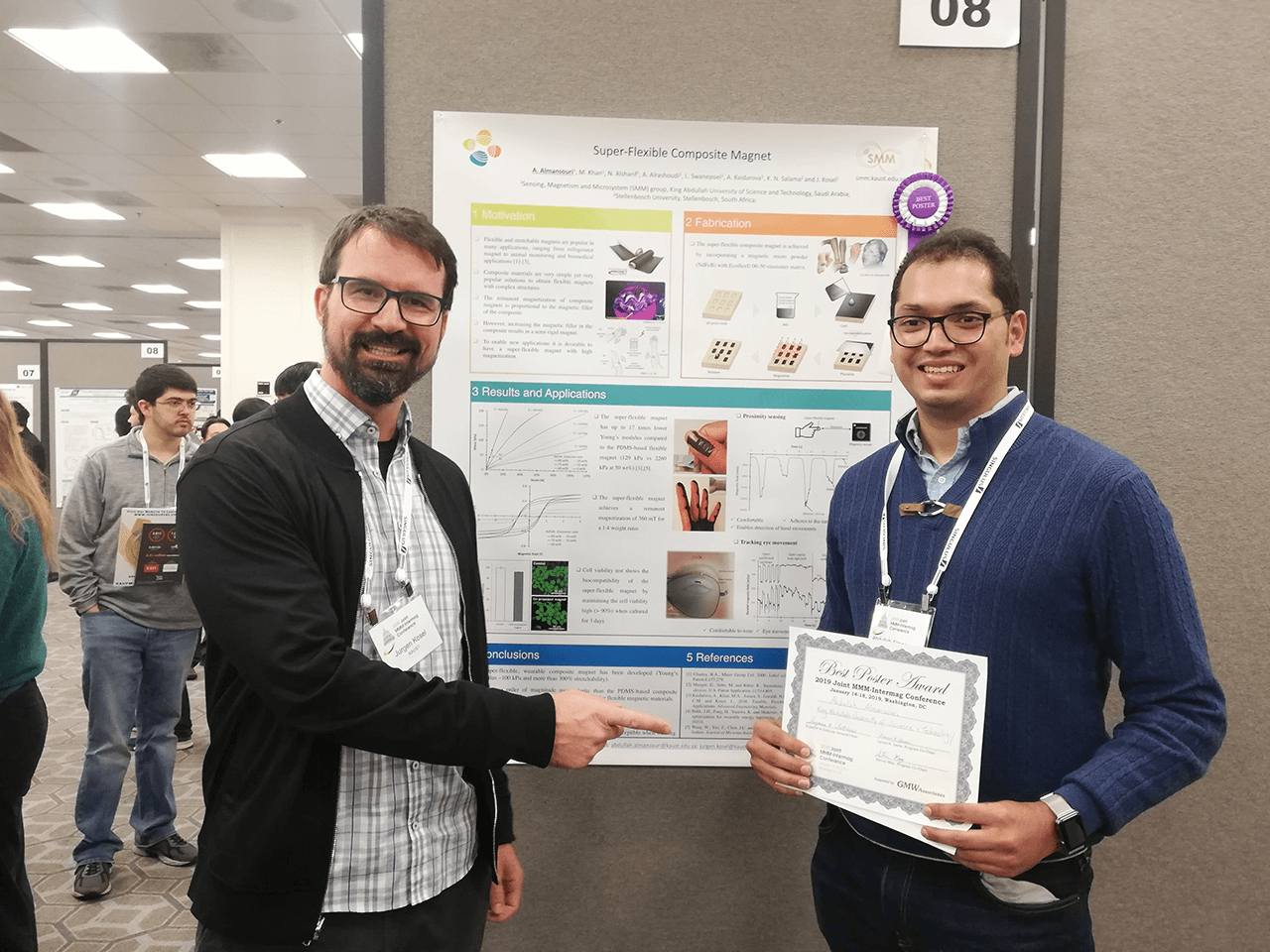Ph.D. student Abdullah Almansouri wins best poster award

KAUST Ph.D. student Abdullah Almansouri recently won a best poster award at the 2019 Joint MMM-INTERMAG Conference. At the University, Almansouri is co-supervised by Professors Jürgen Kosel and Khaled Salama. File photo.
By David Murphy, KAUST News
Abdullah Almansouri, a KAUST Ph.D. student working under the supervision of Associate Professor Jürgen Kosel in the Sensing, Magnetism and Microsystems (SMM) research group and Professor Khaled Salama in the Sensors Lab research group, recently won a best poster award at the 2019 Joint MMM-INTERMAG Conference held in Washington, D.C.
The conference, which took place from January 14 to 18, occurs every three years and combines two annual international conferences on magnetism: the IEEE International Magnetics Conference (INTERMAG) and the Magnetism and Magnetic Materials Conference (MMM). The event incorporated all aspects of fundamental and applied magnetism and featured the latest developments in biomagnetism, emerging applications and magnetic materials, among other topics.
Almansouri's winning poster entitled "Super-Flexible Composite Magnet" was based on work carried out by the SMM group involving the development of a stretchable and ultra-flexible wearable biocompatible composite magnet, or a "magnetic skin." The flexible properties of the device waive the feeling of its presence when attached to the body, making it comfortable and imperceptible when worn for the user.
"The preliminary results of this work were presented at the joint MMM-Intermag Conference," Almansouri stated. "Our work was extremely well-received by the audience."

KAUST Ph.D. student Abdullah Almansouri (right) is pictured here at the 2019 Joint MMM-INTERMAG Conference with his Ph.D. co-supervisor KAUST Associate Professor Jürgen Kosel. Image courtesy of Abdullah Almansouri.
Creating imperceptible wearability
The past few years have seen a significant increase in the development of wearable technology. Almansouri believes the research carried out within the KAUST SMM research group compliments recent global developments in the wearable materials market. He also feels that the core innovation behind the SMM team's magnetic skin is the imperceptible wearability of the technology.
"The developed material has a wide range of applications, one of which is biomedical monitoring," Almansouri explained. "We utilized the magnetic skin for tracking the movement of the eye by attaching it to the eyelid. In another application, we used it as a proximity sensor for a touchless gesture-screen by attaching it to our fingers. Basically, the elastic properties of [the] material make it very comfortable to wear without noticing its presence. Also, it can be shaped and painted to the likes of the user to either be invisible or to catch attention like a tattoo."
Almansouri feels the award was made possible thanks to the outstanding qualities of his colleagues and the top-tier facilities that complement their research at the University.
"Without a doubt, the enabling facilities and the capable supervisors and students here at KAUST paved the way for this achievement," he said. "Winning the best poster award at such a significant conference reveals the importance of our work and motivates the team to work harder to realize a complete and functional product."
Related stories:

